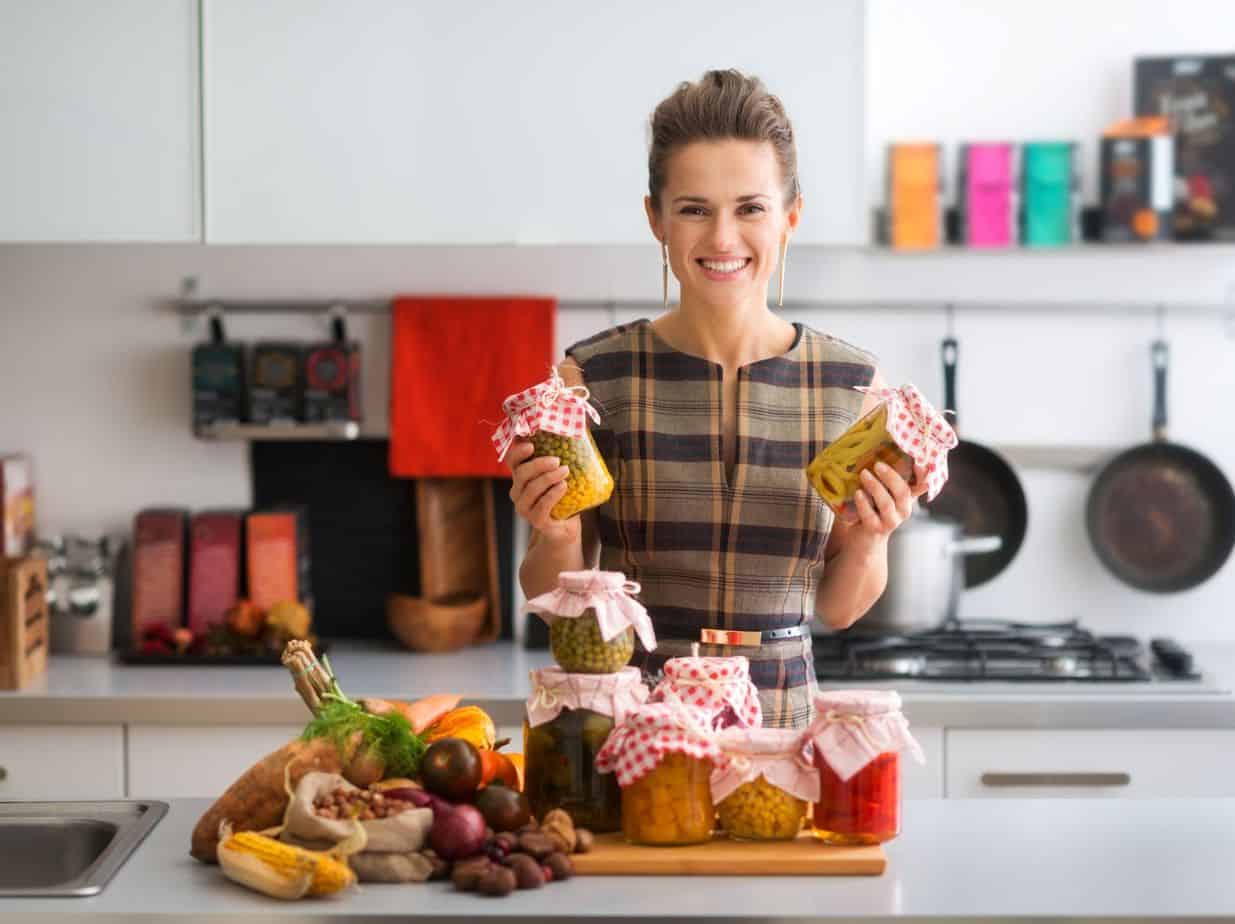Home canning is a great way to provide your household with healthy, minimally processed fruit, vegetables, and other foods, all year round and at a low cost. It is important to learn home canning core principles and safety measures before you begin to avoid poor flavor, spoilage, or even food poisoning. Excellent hygiene and proper equipment are essential.
Before you begin home canning, make sure you take on board the important information in our guide below in order to ensure your preserved foods remain tasty, nutritious, and safe to eat.
What are the benefits of home canning?
Home canning can help you make the most of local, seasonal produce, live a more sustainable lifestyle, and save money. The efficiencies and advantages of home canning are wide-ranging.
For example, there is no ongoing electricity consumption after preparation since you can store canned foods in a pantry or any cool, dry, dark space. Larger amounts of food may be preserved at once through canning than through storage in fridges and freezers.
Canned foods can also often be stored for longer than in fridges and freezers and should last for at least a year before flavor and nutritional content begin to deteriorate.
Some rural communities have a long tradition of canning, with recipes for jams, pickles, and preserves handed down through generations. Home canning can provide a link with local or family history.
What equipment do I need to start home canning?
The equipment you need to start home canning will depend on the type of foodstuffs you are planning to preserve and store and the quantities you are aiming to produce at once.
You will certainly need a good supply of glass jars, lids, and bands/seals, all specifically designed for canning. Other essentials might be tongs or other gripping tools for lifting hot jars and lids, a funnel for decanting liquids, labels for your jars, and an accurate food thermometer whose scale covers the temperature range you need.
General kitchen equipment you are likely to use during home canning includes scales, measuring cups and spoons, colanders, sieves, pans made of non-reactive metals, and heat-proof mats.
High-acid foods can be safely canned using the traditional boiling water bath method. For this, you need a large cooking pot, ideally with a canning rack and lid. It must be deep enough to fit your jars with 1-2 inches of boiling water above their tops. Atmospheric steam canning can also be used for high-acid foods.
Low-acid foods require a pressure canning device to reach high enough temperatures to kill dangerous bacteria and spores. Many pressure canning devices will also be suitable for boiling water bath canning.
Before you start canning, check the rubber seals and lids on your jars or equipment to ensure there are no chips, dents, perishing, or other signs of damage. Items which will come into contact with food should be clean and sterilized.
What foods are suitable for home canning?
A wide range of fresh foods and preserves are suitable for home canning as long as the correct canning method is chosen. Fruits, jams and jellies, or pickles are all popular choices.
Is home canning really safe?
When food is properly canned and stored, it could provide safe, delicious meals for a year or more.
For safe home canning, excellent hygiene and safety precautions are vital at all stages. This includes heating to sufficiently high temperatures for sufficient time, using the correct method and equipment for your foodstuff, and ensuring seals are airtight. If in doubt, throw it out. Skipping safety steps or taking half-measures could prove deadly.
Botulism is the most common illness associated with home canning. Severe but rare, botulism is caused by the bacteria Clostridium botulinum, commonly found in soil. While the bacteria itself may be killed at the temperature of boiling water, its spores can survive to produce harmful toxins.
High-acid foods (e.g., many fruits, pickles, jams) can be canned with the boiling water bath method since their acidity prevents botulism spores from growing. In low-acid foods (e.g., vegetables, meat, seafood), the product must be heated to at least 240 °F / 116 °C or above to destroy these spores, a temperature which can only be reached through pressure canning.
Contact with botulinum toxin can be fatal whether ingested or absorbed via skin contact. Between 1996-2014 in the USA, 30% of home-prepared food-linked botulism outbreaks officially reported came from home-canned vegetables. A significant number of cases were associated with home canners not properly following safe canning guidance.
A final word…
If you want to eat cheaply but sustainably while avoiding processed foods, then home canning could be for you. Getting started with home canning needs to be safe but doesn’t need to be complicated.


